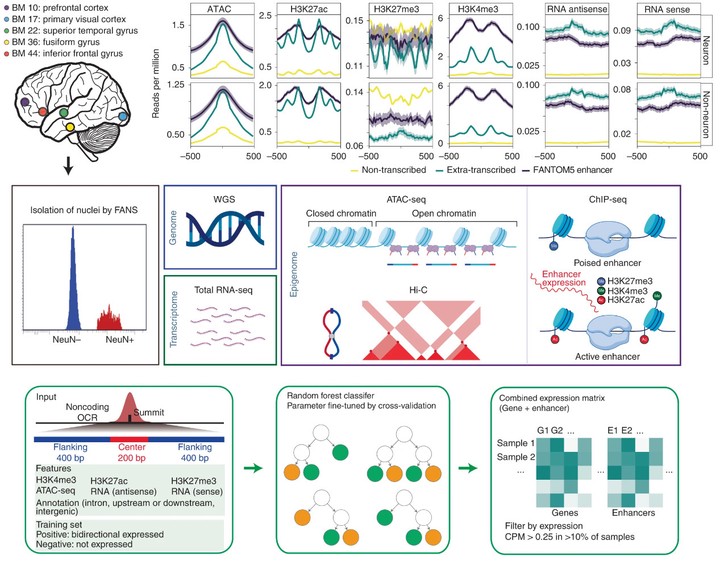Population-level variation in enhancer expression identifies disease mechanisms in the human brain

Abstract
Identification of risk variants for neuropsychiatric diseases within enhancers underscores the importance of understanding population-level variation in enhancer function in the human brain. Besides regulating tissue-specific and cell-type-specific transcription of target genes, enhancers themselves can be transcribed. By jointly analyzing large-scale cell-type-specific transcriptome and regulome data, we cataloged 30,795 neuronal and 23,265 non-neuronal candidate transcribed enhancers. Examination of the transcriptome in 1,382 brain samples identified robust expression of transcribed enhancers. We explored gene-enhancer coordination and found that enhancer-linked genes are strongly implicated in neuropsychiatric disease. We identified expression quantitative trait loci (eQTLs) for both genes and enhancers and found that enhancer eQTLs mediate a substantial fraction of neuropsychiatric trait heritability. Inclusion of enhancer eQTLs in transcriptome-wide association studies enhanced functional interpretation of disease loci. Overall, our study characterizes the gene-enhancer regulome and genetic mechanisms in the human cortex in both healthy and diseased states.